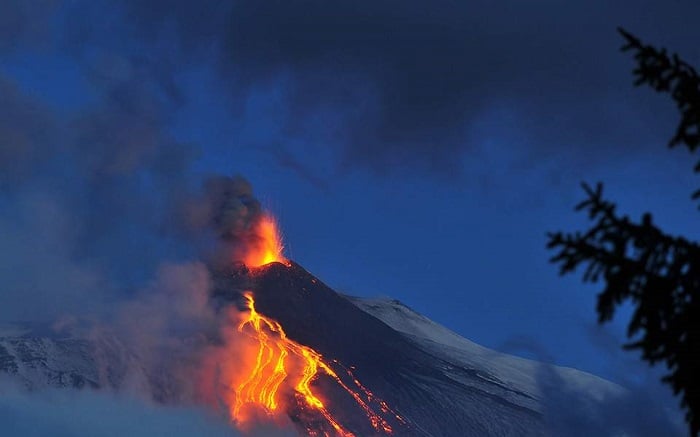
Mount Etna in Sicily, Europe’s biggest active volcano, is slipping eastwards into the sea, and scientists fear that it could trigger a catastrophic tsunami.
Scientists are concerned that the slow movements that have been measured on Mount Etna’s southeastern flank could escalate and result in its partial collapse into the water.
Mount Etna collapse could create a devastating tsunami
Such an event would place Sicily and the Ionian Sea at risk as debris would enter the surrounding ocean, possibly causing devastating waves.

However, researchers monitoring the site say all they can do for now is “keep an eye” on the active volcano, as there is no way of telling whether this acceleration will come within years or centuries.
Past work has only focused on Etna’s above-ground component, but gathering the new underwater measurements confirmed the movement is due to gravity acting on its growing, and unstable, flank.
“You can think of a slow landslide at the moment—we had 4cm in 15 months, so it moves really slowly, but there is a danger that it could accelerate and form a landslide that moves really fast into the sea,” Dr Morelia Urlaub from Geomar Helmholtz Centre for Ocean Research told The Independent, the British daily, recently.
“We have been monitoring Etna on shore for around 30 years now, but 30 years is nothing compared to the age of Etna, which is 500,000 years old,” she said.
“It could happen in 10 or 100 or 100,000 years—we can’t tell,” she concluded.
With this in mind, she said that for now, it is very important to keep monitoring the volcano and try to get an idea of what level of movement could indicate an imminent collapse.
Since 2000, Etna has had four flank eruptions, namely in 2001, 2002 to 2003, 2004 to 2005, and 2008 to 2009. Summit eruptions occurred in 2006, 2007 to 2008, in January to April 2012, in July to October 2012, in December 2018, and again in February 2021.
Over a six-month period in 2021, Etna erupted so much volcanic material that its height increased by approximately 100 ft (30 m), and the southeastern crater is now the tallest part of the volcano
In February 2022, Mount Etna blasted a massive twelve-kilometer-high (7.5-mile) pillar of volcanic ash into the sky over the Italian island of Sicily.
Scientists from Italy’s National Institute of Geophysics and Volcanology (INGV) in Catania say activity centered on a lava flow on the mountain’s southeast slope. Ash from the eruption blanketed nearby towns according to Italy’s civil protection agency.
See all the latest news from Greece and the world at Greekreporter.com. Contact our newsroom to report an update or send your story, photos and videos. Follow GR on Google News and subscribe here to our daily email!



